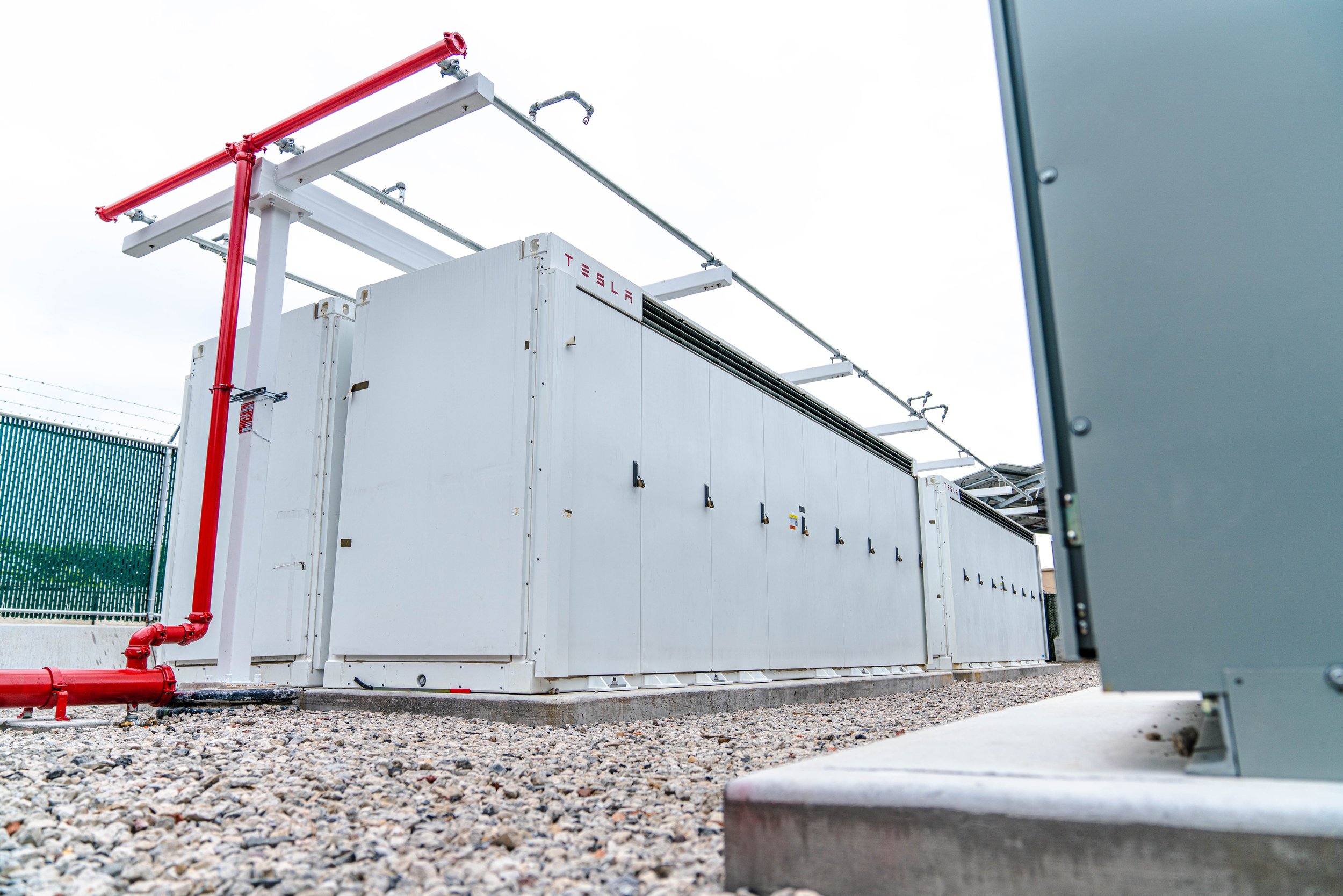
Critical Infrastructure:
Battery Energy Storage in New York
Battery energy storage is critical to improving grid reliability, harnessing the full power of renewable energy, reducing New York’s reliance on fossil fuels, and transitioning to a modernized electric grid. It is critical to plan for the future, today.
Battery energy storage will be increasingly necessary to store power from renewable energy, like wind and solar, over the coming years to create a more reliable electric grid that delivers clean energy to New Yorkers when they need it most.
How Does It Work?
Sign Up Form
The Benefits of Battery Energy Storage
Grid Reliability
Battery energy storage will ensure that New York’s electric grid is reliable and resilient, even in the face of extreme weather events.
Battery energy storage systems store energy from renewable energy sources and deliver it when electricity demand is greatest.
Safety
Battery energy storage systems are regulated at the federal, state, and local levels to mitigate risk and uphold safety measures.
New York’s Inter-Agency Fire Safety Working Group conducted extensive analysis following battery system fires in the state and did not find any harmful levels of toxins or any reported injuries in their initial report.
In February 2024, the Working Group released its initial draft fire code recommendations focused on updating existing codes and implementing new standards and best practices to enhance safety standards for battery energy storage systems.
These recommendations will be considered for addition to the state fire code. Together with the industry, ACE NY is deeply invested in continuing to work alongside the state to ensure battery energy storage systems developed in New York meet these best-in-class safety standards.
Environmental Benefits
Battery energy storage systems will improve air quality and help support the state’s clean energy transition. Battery energy storage offers a clean, reliable solution to meeting peak demand by replacing fossil fuel-emitting peaker plants. Renewable energy also benefits our water resources.
Battery energy storage systems also have a small footprint and are typically developed alongside existing solar, wind, and other industrial sites.
Economic Benefits
Battery energy storage can stabilize electricity costs for consumers, generate economic investment for local communities, and create good-paying clean energy jobs for New Yorkers.
Battery energy storage paired with transmission infrastructure will be cheaper and more efficient than building new transmission lines to integrate renewable energy.
NYSERDA reported nearly 171,000 clean energy jobs in the state in 2022, with grid modernization and storage jobs accounting for 10% of new jobs. By 2030, the battery storage industry could create approximately 30,000 jobs in New York.
Current Battery Energy Storage Projects in New York
There are 5,000+ existing battery energy storage projects in New York, storing 340.70 MW of clean energy that has bolstered grid resiliency for local communities. (Source: NYSERDA)
Read on about the great improvements battery energy storage facilities are making to our electricity grids.
Newsday: Battery storage is essential; recent fires show that safety is, too
Scientific American: As Heat Waves Roast Texas, Batteries Keep Power Grid Humming
FAQs
-
Battery energy storage is critical to create a reliable and modern electric grid that reduces our reliance on fossil fuels. This technology can support the electric grid by:
1. Providing the flexibility necessary to store excess energy generated from renewable energy sources during times of low demand and send it back to the grid when it’s needed most.
2. Helping provide back-up power during emergencies like blackouts from storms or heat waves, equipment failures, or accidents.
3. Stabilizing electricity costs by storing energy when the price of electricity is low and discharging that energy back onto the grid during peak demand.
4. Balancing power supply and demand instantaneously, which makes the electric grid more reliable, resilient, efficient, and cleaner than ever before.
Battery energy storage will also help achieve state and national clean energy goals.
-
Battery energy storage is developed by renewable energy developers. Storage systems can be built as stand-alone facilities or alongside existing renewable energy projects and have small footprints with minimal visual impacts.
-
Yes. New York is home to 6,000+ battery energy storage facilities. Fires at these facilities are rare, and developers and regulators in New York have already begun taking steps to mitigate risks by implementing enhanced safety protocols and emergency response plans – and reviewing and updating existing fire codes.
-
Battery energy storage systems are regulated at the federal, state, and local levels and must undergo rigorous safety testing to be authorized for installation. Every battery technology integrated into the electrical grid comes from a certified source and is required to comply with national fire protection standards that are frequently updated to incorporate the best practices for hazard mitigation tools and strategies. Battery energy storage systems must also comply with electrical and fire codes adopted at the state and local level.
-
No. While the underlying technology is largely the same, the conditions and scale at which these batteries are being used are very different. Further, e-bikes have few regulations regarding their use and safety, while battery energy storage facilities are highly regulated and held to national safety standards.
Unlike e-bike batteries, energy storage systems are equipped with sensors that track battery temperatures and enable storage facilities to turn off batteries if they get too hot or too cold.
-
Developers carefully design battery energy storage projects to fit into the surrounding landscape with minimal viewshed impact and are often located alongside other existing wind or solar projects. Behind the scenes, battery energy storage helps ensure homes and communities receive power when it’s needed most, including during peak demand and extreme weather events, while helping stabilize electricity costs.
-
No. In the rare case where fires do occur, they can be managed without endangering broader communities. The diverse system components that comprise the storage facilities have chemical and fire smoke data that can be utilized to determine the risks for each facility.
-
In normal operation, energy storage facilities do not release pollutants to the air or waterways.
-
No. In fact, battery energy storage will help stabilize electricity costs by supplementing the need for costly transmission upgrades and enabling more efficient use of renewable energy.
Battery Energy Storage in the News
-

Times Union
Fire code update targets industrial, utility-scale battery arrays
Article by Rick Karlin
-

Lohud
We have to embrace battery energy storage. It can benefit all New Yorkers and our climate
Article by Marguerite Wells and Julie Tighe
-

Newsday
Battery storage is essential; recent fires show that safety is, too
Guest Essay by Julie Tighe
-

Long Island Business News
Kelleher: New York’s strategic approach to battery storage & safety
Guest Essay by Deb Peck Kelleher







